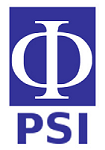Application of Multisim Software in Wave Rectifier Circuit Learning and its influence based on Students' Visual Spatial Ability
DOI:
https://doi.org/10.25273/jpfk.v7i1.9068Keywords:
Multisim Software, Visial-Spatial Ability, Wave Rectifier CircuitAbstract
This study aims to determine the effect of the National Instruments (NI) Multisim Software on students’ mastery of the wave rectifier circuit viewed from students' visual-spatial abilities (KVS). A pre-experimental design was used in this study. The sample of this research was students of the Physics Education Study Program taking the Basic Electronics I course selected through saturated sampling technique. The data collection tools were in the form of a visual-spatial ability test instrument and the wave rectifier circuit mastery test instrument. Correlation tests, multiple regression, and independent-sample t-test were used to determine the effect of spatial-visual ability on the learning outcomes of the wave rectifier circuit through the application of the National Instruments Multisim Software. The results obtained indicate that: 1) Student learning outcomes on the wave rectifier circuit material by using the NI-Multisim Software has in the sufficient category; 2) Students' visual-spatial ability on the KVS-interpretation has very high-category, KVS-series pattern has high-category, KVS-reflection has high-category, KVS-rotation has high-category, KVS-projection has high-category, and KVS-drawing has medium-category; 3) The ability of students' spatial visibility has a positive and significant correlation to student learning outcomes and has an influence contribution of 76.20% to learning outcomes; 4) The learning outcomes of students who have KVS-high are better than the average learning outcomes of students who have KVS-low in learning the wave rectifier series material using the NI-Multisim software.
Downloads
References
Abu-aisheh, A. A., & Eppes, T. (2010). Remote and Virtual Instrumentation Platform for Distance Learning. International Journal of Online and Biomedical Engineering (IJOE), 6(3), 59. https://doi.org/10.3991/ijoe.v6i3.1278
Andersen, L. (2014). Visual-Spatial Ability: Important in STEM, Ignored in Gifted Education. Roeper Review, 36(2), 114–121.
Ardian, A., & Munadi, S. (2016). Pengaruh Strategi Pembelajaran Student-Centered Learning dan Kemampuan Spasial terhadap Kreativitas Mahasiswa. Jurnal Pendidikan Teknologi Dan Kejuruan, 22(4), 454. https://doi.org/10.21831/jptk.v22i4.7843
Arifin, Z. (2012). Evaluasi pembelajaran: Prinsip Teknik Prosedur. In Bandung: Remaja Rosdakarya. Bandung: PT Remaja Rosdakarya.
Arikunto, S. (2018). Dasar-Dasar Evaluasi Pendidikan (Edisi 3). In Jakarta: Bumi Aksara. bumi aksara.
Bayangkari, Y. (2018). Analisis Perbandingan Penggunaan Multisim 11 Simulation dengan Praktikum Langsung terhadap Hasil Belajar Peserta Didik Pada Mata Pelajaran Listrik Dinamis Kelas IX MTs Negeri 2 Bulukumba. Universitas Islam Negeri Alauddin Makassar.
Budiono, N. Y. (2017). Pengaruh Penggunaan Software Multisim Sebagai Media Pembelajaran Terhadap Hasil Belajar Siswa pada Standart Kompetensi Teknik Elektronika di SMKN 1 Grati-Pasuruan. Jurnal Pendidikan Teknik Elektro, 6(2).
Cohen, L., Manion, L., & Morrison, K. (2017). Research Methods in Education. In Research Methods in Education. routledge.
Harmony, J., & Theis, R. (2012). Pengaruh Kemampuan Spasial Terhadap Hasil Belajar Matematika Siswa Kelas VII SMP Negeri 9 Kota Jambi. Edumatica, 02(April), 11–19.
Hermansyah, H., Gunawan, G., & Herayanti, L. (2017). Pengaruh Penggunaan Laboratorium Virtual Terhadap Penguasaan Konsep dan Kemampuan Berpikir Kreatif Siswa pada Materi Getaran dan Gelombang. Jurnal Pendidikan Fisika Dan Teknologi, 1(2), 97. https://doi.org/10.29303/jpft.v1i2.242
Isnaeni, N. (2013). Pengaruh Spatial Visualization dan Hobi Siswa terhadap Pemahaman Konsep Fisika Siswa Kelas XI SMA Negeri se-Kabupaten Purworejo Tahun Pelajaran 2013 …. Radiasi: Jurnal Berkala Pendidikan Fisika, 3(2), 145–149.
Kustiani, I., & Despa, D. (2019). Persepsi Peserta Program PS PPI Unila Mengenai Aplikasi Pembelajaran Daring. Buletin Profesi Insinyur, 2(3), 122–124. https://doi.org/10.20527/bpi.v2i3.55
Mahata, S., Maiti, A., & Maiti, C. K. (2010). Cost-effectiveweb-based electronics laboratory using NI MultiSim, LabVIEW and ELVIS II. 2010 International Conference on Technology for Education, T4E 2010, 242–243. https://doi.org/10.1109/T4E.2010.5550110
Marczyk, G., DeMatteo, D., & Festinger, D. (2006). Essentials of research design and methodology. In Choice Reviews Online (Vol. 43, Issue 09). John wiley & sons, Inc. https://doi.org/10.5860/choice.43-5572
Ngadimin, N., & Sanirin, F. (2015). Kontribusi Kemampuan Numerik Dan Spasial Terhadap Hasil Belajar Fisika Siswa. Jurnal Fisika Edukasi, 2(1), 55–60.
Padmi, A. I. C., Patmanthara, S., & Soraya, D. U. (2020). Perbedaan Hasil Belajar Sistem Komputer Karena Pengaruh Penerapan Discovery Learning Berbantuan Multisim Dibandingkan Problem Based Learning Berbantuan Multisim pada Siswa Kelas X TKJ di SMK Negeri 2 Malang. Jurnal Penelitian Pendidikan Dan Pembelajaran (JPPP), 1(1), 41–51.
Rimbarizki, R. (2017). Penerapan Pembelajaran Daring Kombinasi Dalam Meningkatkan Motivasi Belajar Peserta Didik Paket C Vokasi Di Pusat Kegiatan Belajar Masyarakat (Pkbm) Pioneer Karanganyar. J+Plus Unesa, 6(2).
Rosdianto, H. (2017). Pengaruh Model Generative Learning Terhadap Hasil Belajar Ranah Kognitif Siswa Pada Materi Hukum Newton. Jurnal Pendidikan Fisika Dan Keilmuan (JPFK), 3(2), 66. https://doi.org/10.25273/jpfk.v3i2.1288
Sadeli, A. (2013). Penggunaan Software Multisim untuk Meningkatkan Hasil Belajar Siswa pada Mata Pelajaran Membuat Pesawat Elektronika-2. Universitas Pendidikan Indonesia.
Scott, D., & Usher, R. (2010). Researching education: Data, methods and theory in educational enquiry. Bloomsbury Publishing.
Surahmat, A., & Fu’ady, T. D. (2020). Simulasi Rangkaian Seven Segment Menggunakan Multisim Pada Pembelajaran Rangkaian Elektronika Analog Dan Digital Di SMKS Informatika Sukma Mandiri. Jurnal of Innovation and Future Technology (I F T E C H), 2(1), 15–28.
Utari, S., & Prima, E. C. (2019). Analisis Hukum Kekekalan Momentum Model Tumbukan Kelereng dengan Gantungan Ganda menggunakan Analisis Video Tracker. Jurnal Pendidikan Fisika Dan Keilmuan, 5(2), 1–9.
Wahyudi, M. A., Widiyanti, W., & Nurhadi, D. (2018). Kecerdasan Visual Spasial dan Kemandirian Belajar pada Hasil Belajar Mata Pelajaran Gambar Teknik di SMK. Teknologi Dan Kejuruan: Jurnal Teknologi, Kejuruan, Dan Pengajarannya, 41(2), 101–109.
Downloads
Additional Files
Published
Issue
Section
License

Jurnal Pendidikan Fisika dan Keilmuan (JPFK) by http://e-journal.unipma.ac.id/index.php/JPFK/index is licensed under a Creative Commons Attribution-ShareAlike 4.0 International License.



















